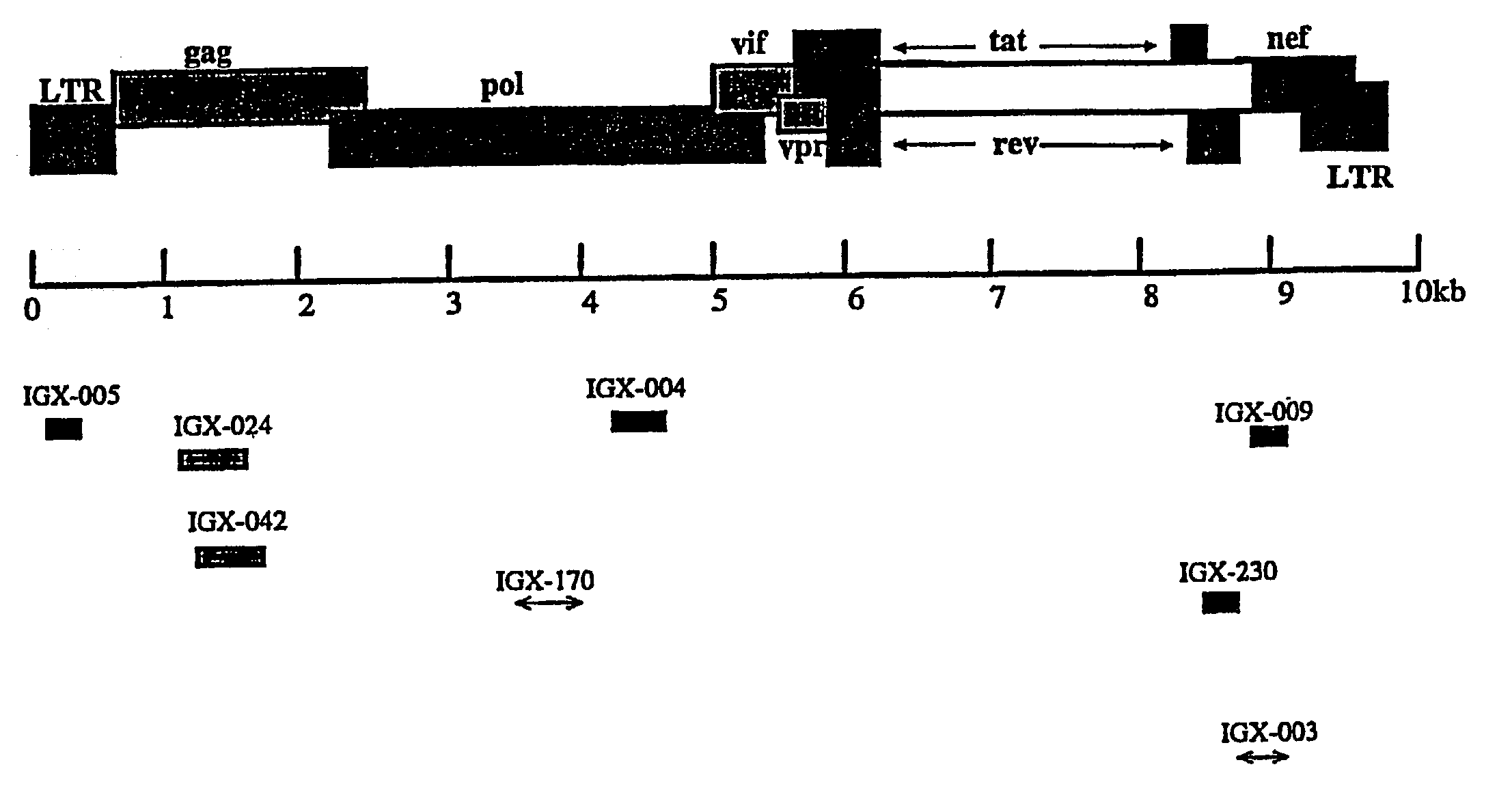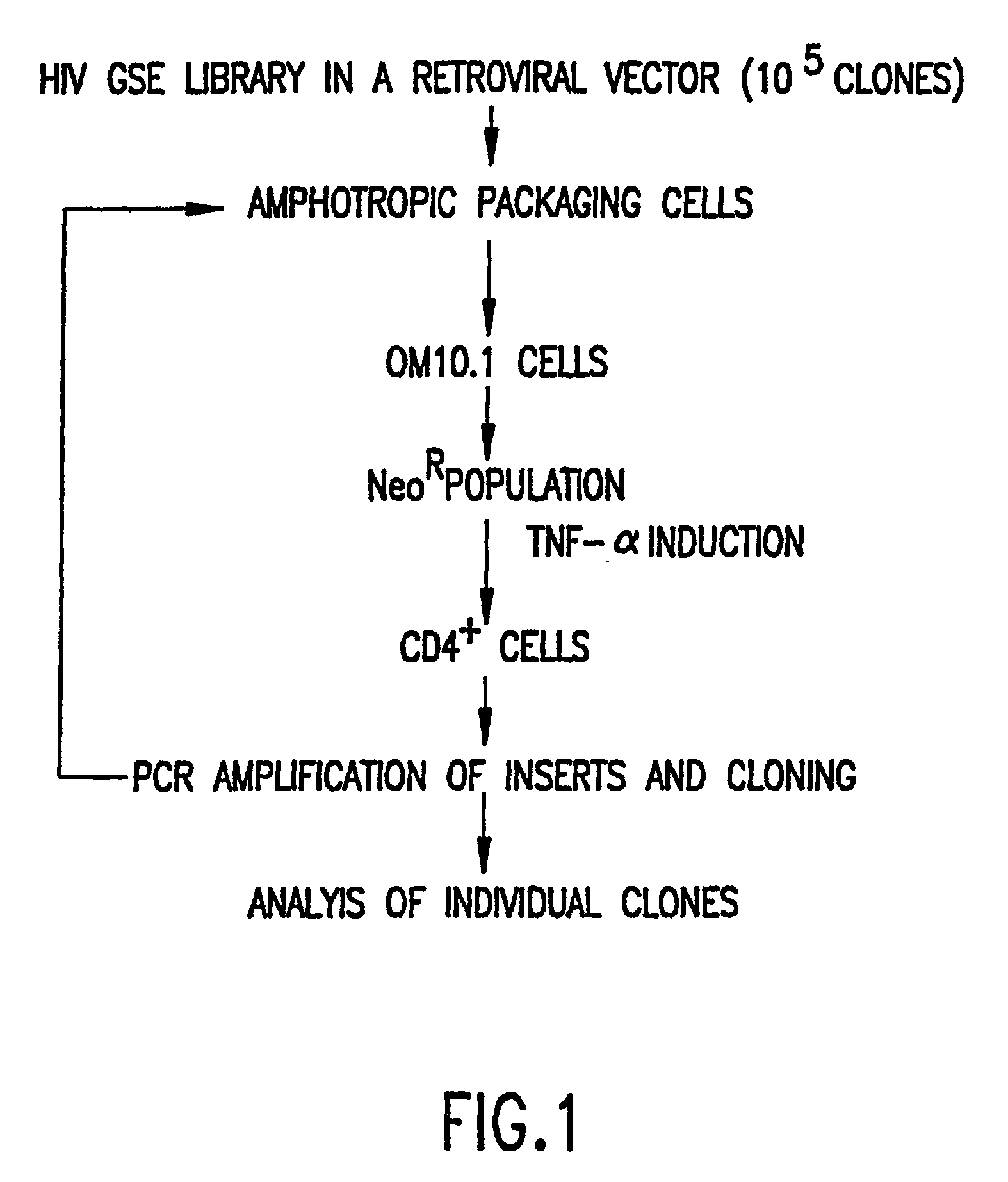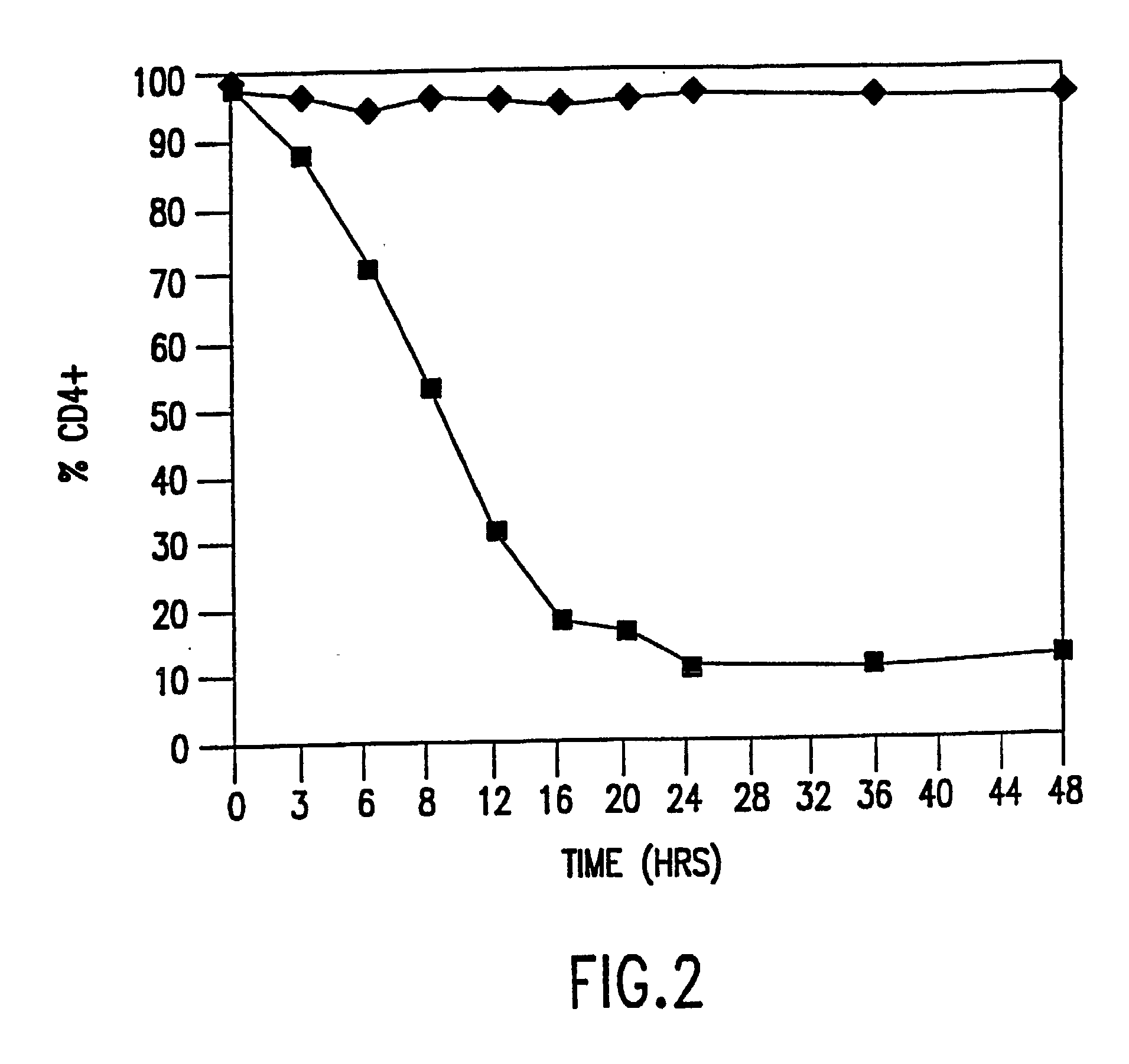Genetic suppressor elements against human immunodeficiency virus
- Summary
- Abstract
- Description
- Claims
- Application Information
AI Technical Summary
Benefits of technology
Problems solved by technology
Method used
Image
Examples
Embodiment Construction
[0039] The present invention relates to specific HIV-derived polynucleotides identified by an improvement of the method disclosed by Roninson et al. in U.S. Pat. No. 5,217,889. More specifically, the improvement of the method includes the use of a cell line containing a latent and inducible HIV-1 provirus such as OM10.1. In addition, the improvement also encompasses the use of a marker associated with HIV infection such as CD4 to select for polynucleotides from an HIV-1 RFE library that effectively suppress HIV-1 infection. The GSE selected by this procedure are also able to protect uninfected cells from HIV infection.
[0040] FIG. 1 presents a schematic drawing of one specific method used to identify several GSE from a RFE library that prevent the induction of latent HIV-1. The method includes the steps of: 1) fragmenting the HIV-1 genome into 100-700 base pair (bp) fragments; 2) inserting the fragments into expression vectors such that the fragments are transcribed and translated to...
PUM
 Login to View More
Login to View More Abstract
Description
Claims
Application Information
 Login to View More
Login to View More - R&D Engineer
- R&D Manager
- IP Professional
- Industry Leading Data Capabilities
- Powerful AI technology
- Patent DNA Extraction
Browse by: Latest US Patents, China's latest patents, Technical Efficacy Thesaurus, Application Domain, Technology Topic, Popular Technical Reports.
© 2024 PatSnap. All rights reserved.Legal|Privacy policy|Modern Slavery Act Transparency Statement|Sitemap|About US| Contact US: help@patsnap.com










